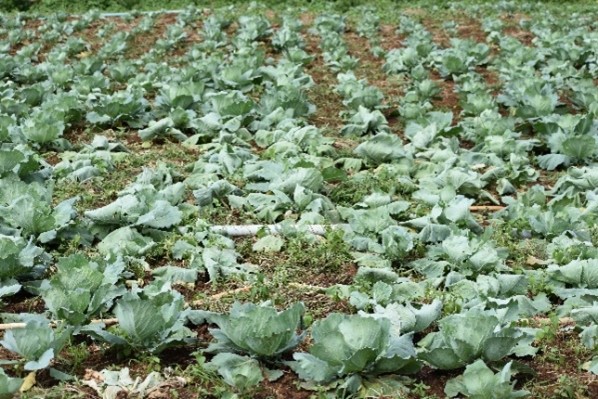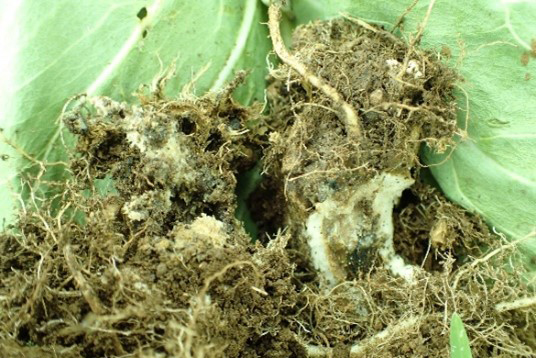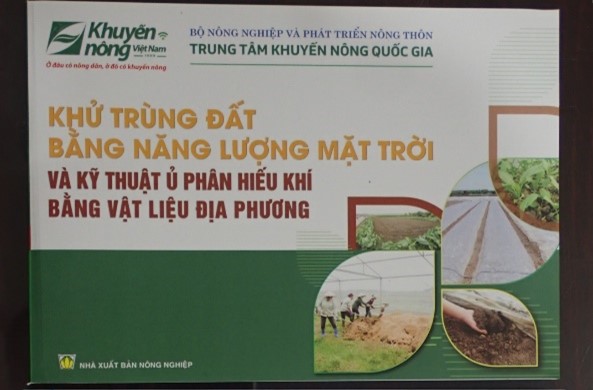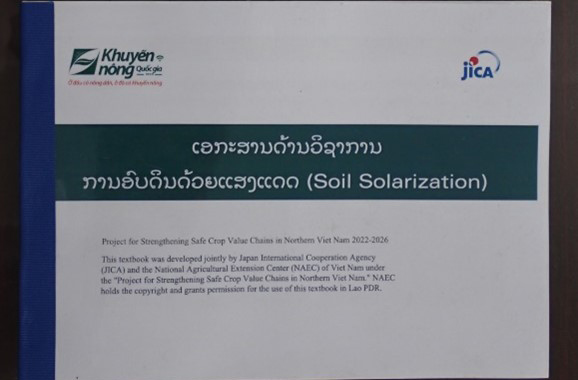With support from the "Project for Strengthening Safe Crop Value Chains in Northern Viet Nam", the "Solarization Soil Disinfection Method Manual" is now available for use in Lao PDR.
In Bolaven Plateau in Champasak Province as one of the target areas for the Project, the Project is implementing pilot project with the aim of improving cabbage value chain as the Government of Lao PDR is putting cabbage as one of the potential export-oriented crops. In the course of the Project, it has been found that clubroot disease, a difficult to control soil-borne disease, is spreading in cabbage fields widely across the Bolaven Plateau. The pathogen invades the roots, hindering plants from absorbing water, resulting in delayed growth, wilting, and inability to harvest. In some severely affected villages, cabbage cultivation has been abandoned. This disease affects not only cabbage but also other cruciferous crops. Devastated Chinese cabbage fields have also been observed. Furthermore, since the pathogen can survive in the soil for over 20 years, control measures must be implemented annually.
In the pilot project, the Project has been supporting the Department of Agricultural Extension and Cooperatives (DAEC) in conducting crop rotation, lime application, pesticide use, resistant varieties introduction, biological control using microorganisms, and solarization soil disinfection methods. Among others, solarization soil disinfection is considered the most effective countermeasure in Lao PDR. This method uses solar heat to effectively "steam" soil-borne pests and weed seeds. Specifically, after applying compost and fertilizers, beds are formed and covered with transparent plastic sheets. The techniques are utilized also in Japan that a four-week treatment from the end of the rainy season to the end of August kills many soil-borne diseases, pest eggs and larvae, and weed seeds.
In order to tackle this challenge, the Project has been coordinating with currently on-going technical cooperation in Viet Nam, the "Project for Strengthening Safe Crop Value Chains in Northern Viet Nam." Ahead of Lao PDR, Viet Nam is introducing improved vegetable cultivation techniques, including the solarization soil disinfection. This project has compiled these findings into a manual, which was published by the National Agricultural Extension Center (NAES) at the end of 2023. The manual is now actively used in the target provinces in Viet Nam.
Through the discussion with NAES, the Project agreed with NAES to use the techniques in Lao PDR including the translation of the manual and field dissemination. The translation is now completed, and efforts have commenced to promote the techniques by the counterpart agency. Extensive dissemination of the output by the technical cooperation in Viet Nam across the borders will contribute to sustainable cabbage production and value chain improvement thus expanding quality cabbage export in neighboring countries.

Many cabbage leaves are wilted, with an infection rate of 60-80%. Photo taken in Kongtoun, Paksong District, on June 29, 2022.

Cabbage roots are severely deformed and have few root hairs. Photo taken in Kongtoun, Paksong District, on June 29, 2022.

Vegetable Cultivation Techniques Manual Developed in Viet Nam.

Lao Version of the Vegetable Cultivation Techniques Manual
